If you have taken a physics class in high school, which I’d imagine most of you did, you’ve probably had to build a mousetrap car as one of your projects. For me, it was a really interesting and fun project because you got to apply the physics concepts that you learned in class into an actual physical system. I built my first mousetrap car 5 years ago, and to be completely honest, it didn’t turn out as good as I wanted. So, for the final project, I want to tackle the mousetrap car again and see if my engineering skills improved at all after 4 years of college. I don’t have the mousetrap car that I made in high school with me but this is pretty close to what it looks like.
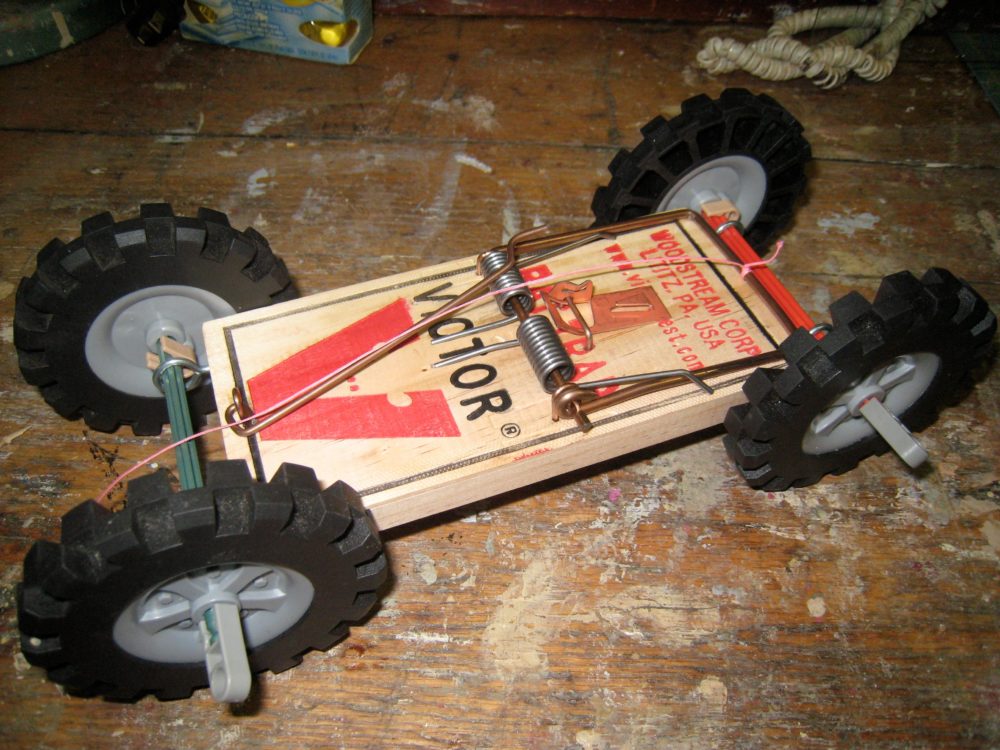
My goals is to be able to make a new and improved mousetrap car that can travel way more distance than what my old one could. Right now I could think of one design that would make this happen, and it has to do with changing the lever arm’s length. Below is a sketch of what my new design looks like compared to my old one.
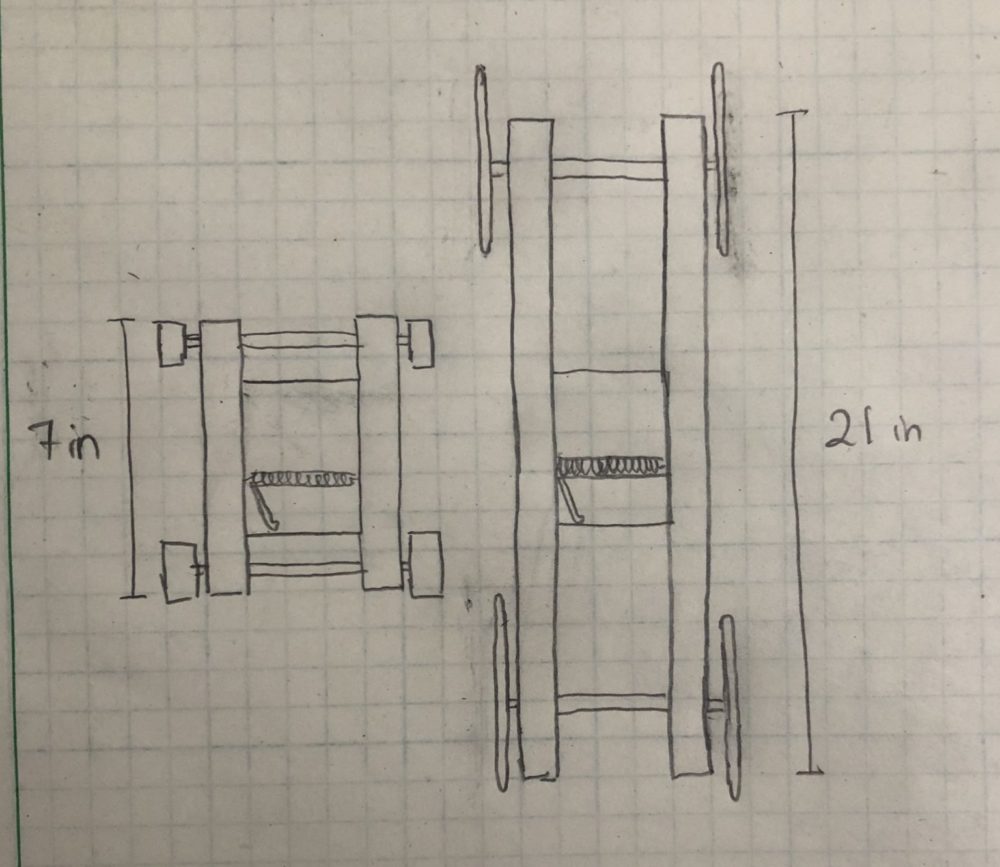
In order to make the car go a longer distance, I have thought of several design conditions. First, increase the mechanical advantage by making the lever arm longer. Second, reduce friction between the wheels and the ground, as well as reduced friction between the car body and the axel. And third, optimize the car’s weight by making it as light as possible without any tradeoff in other areas. I plan to make the body about 21 inches long, which would allows for a good lever arm’s length, while not making the car too heavy. The width of the car will be the width of the mousetrap plus the total widths of the two balsa wood planks on both sides. I will use DVDs for the wheels to reduce inertia and friction. I will use super glue to bond the planks to the mousetrap, because it does not add any substantial weight to the car and works well with balsa wood. The design shown below is pretty simple but it meets all the criteria that I set, so for now, this is what I aim to make.
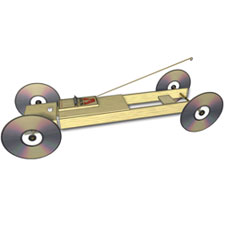
As far as decorations go, I think I’ll stick with just simple drawings on the body of the car, because my main goal is for the car to go as far as possible so I don’t want to add any extra weight. Beside the design shown above, There are quite a few other design ideas out there that I could use. Three wheeled car is a pretty popular one. Here are some examples:
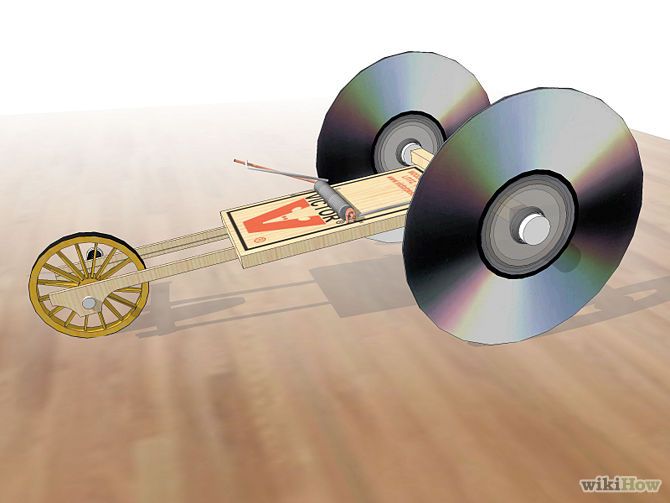
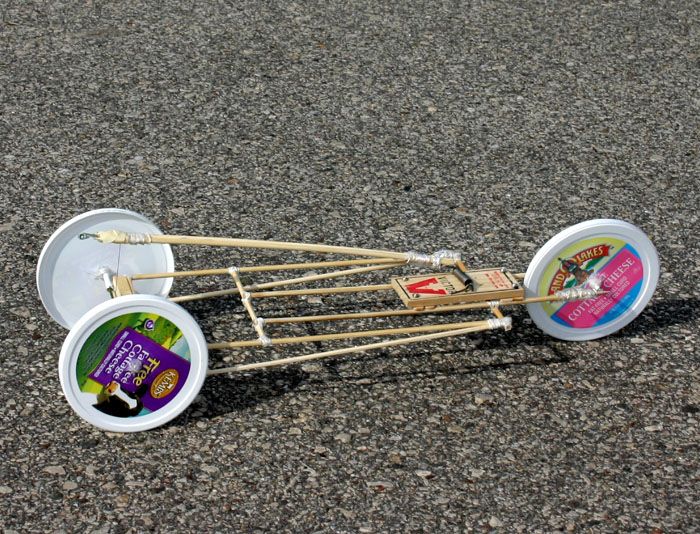
Images Sources:
https://czarneckijohnengineering.weebly.com/mousetrap-car.html
https://www.docfizzix.com/products/vehicle-kits/mousetrap-powered/kmtv102df.shtml
https://ideas-inspire.com/mousetrapcars
https://www.wikihow.com/Adapt-a-Mousetrap-Car-for-Distance
https://www.instructables.com/Rat-Trap-Car/

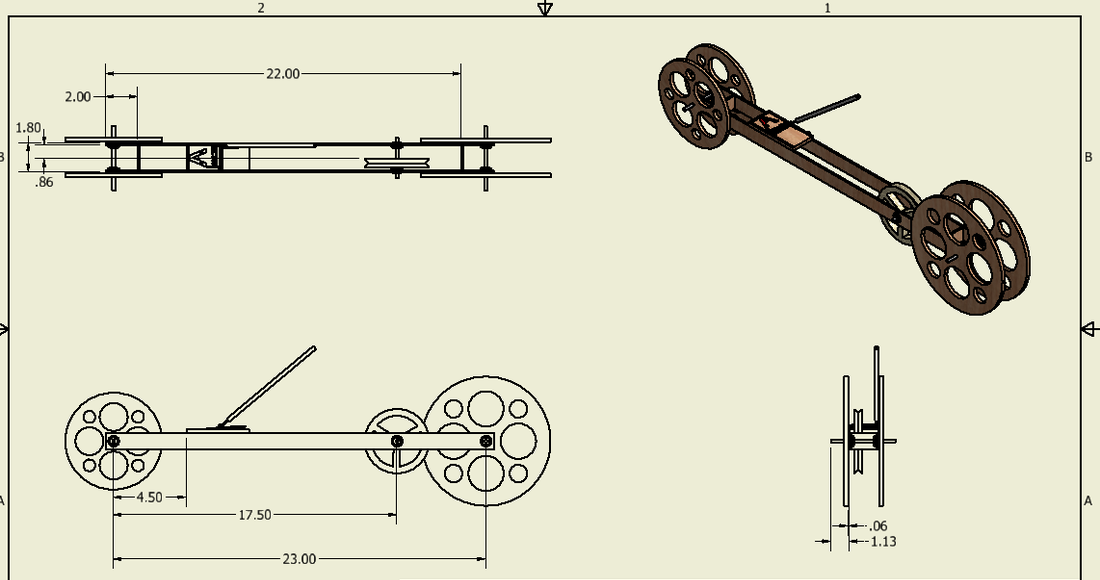
5 Comments. Leave new
you should add a nuclear-powered engine to the car
Hi Bryce, thanks for the feedback! My design intention is to have the DVDs replace the old wheels completely. So instead of having four rubber toy wheels, I’d have four DVDs as the wheels, which hopefully will create less friction with the ground the the rubber ones did.
I have always wondered if I could do this physics project better than I did all those years ago. I really like how you have everything planned out and you have a well-defined goal for your mousetrap car. I also like how you have tried to keep the weight down and the mechanical advantage up on the design. I think those design choices will be beneficial for achieving your long-distance goal. I do wonder how far do you intend your final product to go?
Hi Zack, based on my research of similar designs, I think my car could go about 160 to 190 feet, but hopefully it’ll go beyond that range.
Hi Thuc, I like that this project is improving on a design you’ve already tested. I’m sure with how careful you are being about weight that it will go further then your old car. Are you going to modify the DVD’s to fit to the wheels or to increase friction at all?